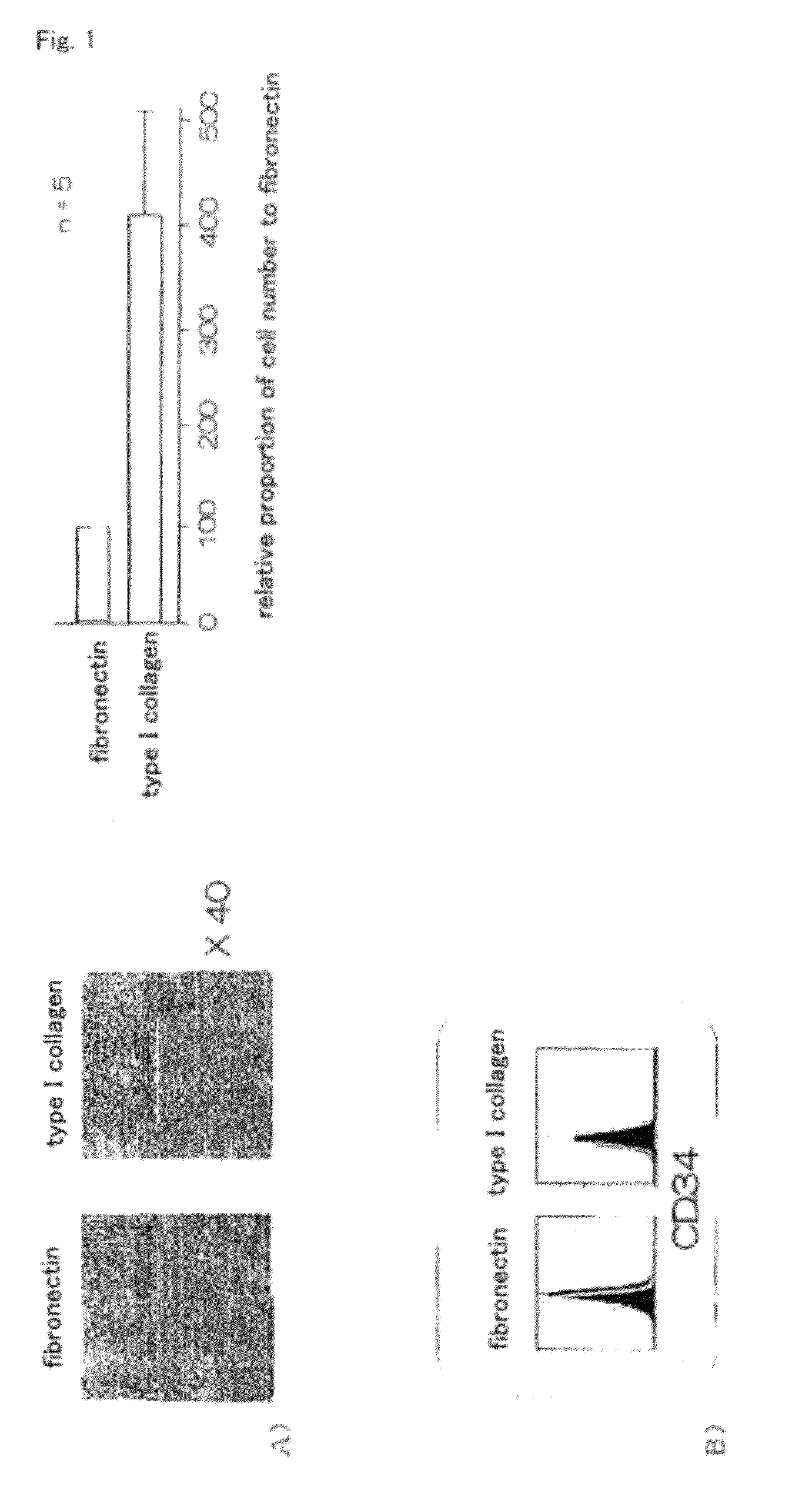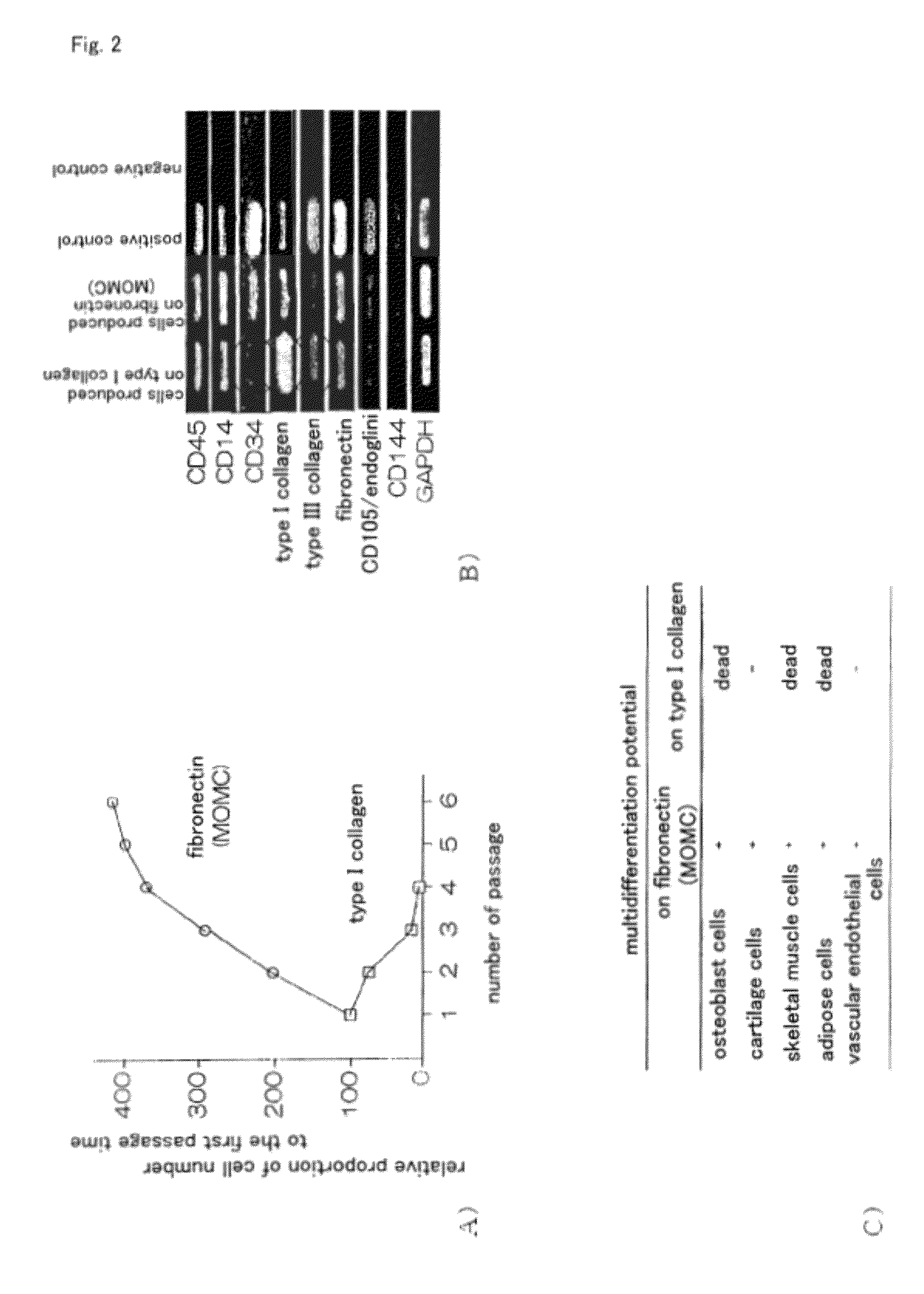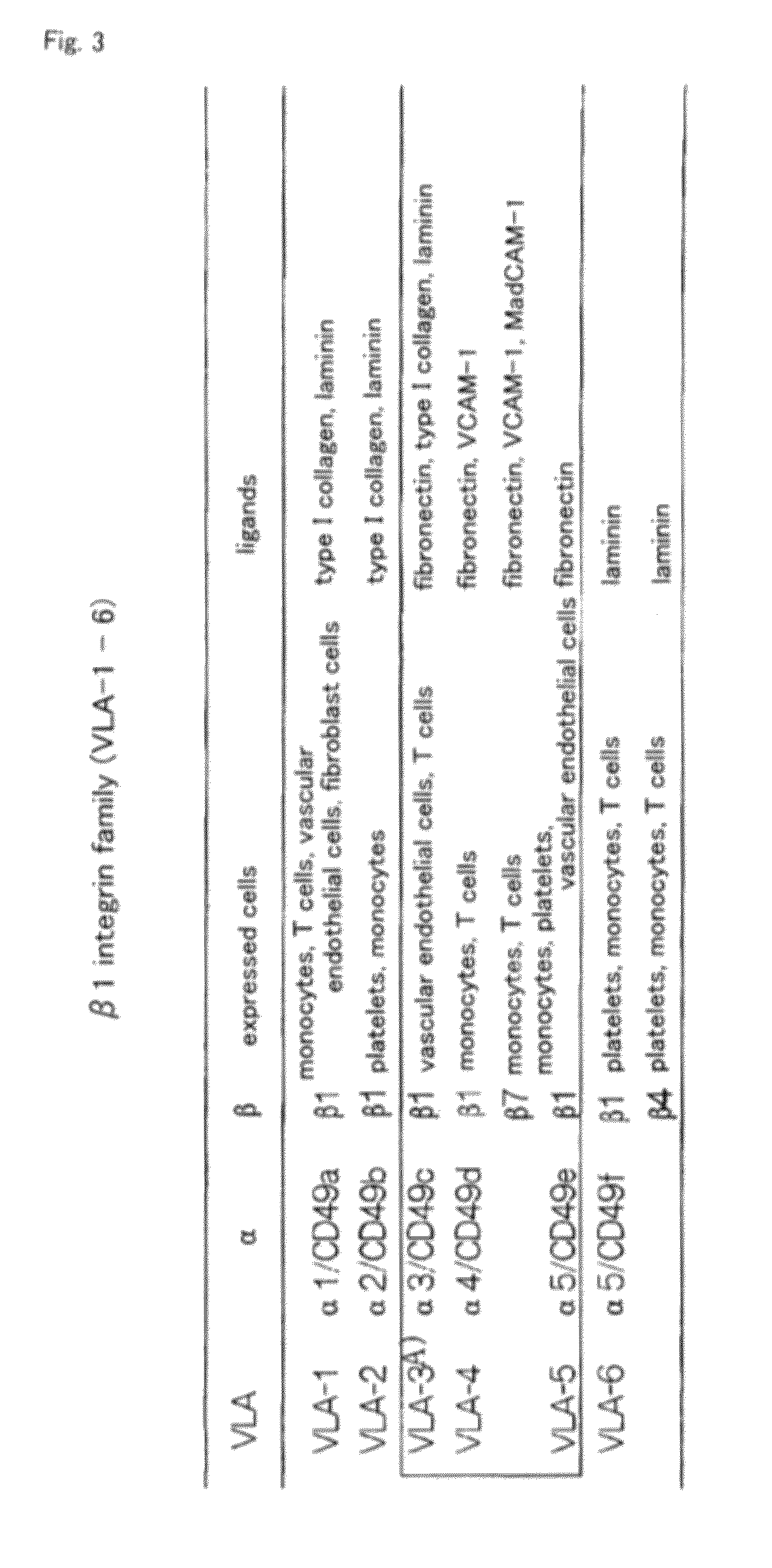Method for efficient production of monocyte-derived multipotent cell (MOMC)
a multi-potent cell, monocyte technology, applied in the direction of peptides, prosthesis, drug compositions, etc., can solve the problems of time-consuming and laborious, difficult to obtain sufficient amount of cells for transplantation, and difficulty in spreading as an actual therapeutic method, etc., to achieve high efficiency and large amount
- Summary
- Abstract
- Description
- Claims
- Application Information
AI Technical Summary
Benefits of technology
Problems solved by technology
Method used
Image
Examples
example 1
[0057]MOMC is a cell having multidifferentiation potential which is induced by culturing CD14-positive peripheral blood monocytes (CD14+ monocytes in peripheral blood) in vitro, which phenotype is CD14+CD45+CD34+ type I collagen+. In the conventional method for producing MOMC (Japanese Patent No. 3762975), it was required that CD14+ monocytes adhere to solid-phase fibronectin in the step of inducing differentiation from CD14+ monocytes in peripheral blood into MOMC, and that a liquid factor derived from CD14+ monocytes is present in the culture solution. Further, in Example 19 of the specification of Japanese Patent No. 3762975, it has been revealed that not all of the peripheral blood CD14+ monocytes differentiate into MOMC, but only some of the cells have a differentiation potential. Further, the present inventors have previously found out that it is necessary to coculture with platelets and not with lymphocytes for inducing MOMC from peripheral blood monocytes (nonpatent document...
example 2
Identification of Adhesion Factor Associated with MOMC Differentiation Induction
[0058]First, the MOMC differentiation-inducing potential of fibronectin and type I collagen was compared. Venous blood obtained from healthy adult donor was subjected to density-gradient centrifugation to isolate peripheral blood monocytes (PBMC). Further, CD14+ monocytes were separated from PBMC by using anti-CD14 antibody binding magnetic beads. The obtained CD14+ monocytes were suspended into platelet culture supernatant containing SDF-1 (low glucose Dulbecco's modified Eagle's medium (DMEM) supplemented with 10% fetal bovine serum (FBS)), and cultured on a fibronectin- or type I collagen-coated plate for 7 to 10 days. As a result, in cells obtained from the culture on type I collagen, a significant increase was observed in the number of adhered cells compared to those obtained on fibronectin (FIG. 1A). However, as a result of a flow cytometry analysis, CD34 expression which is one of the characterist...
example 3
[0060]Next, identification of adhesion molecule on monocytes associated with MOMC induction was attempted.
[0061]It is known that cell adhesion molecules binding with fibronectin are VLA-3, VLA-4 and VLA-5 of the integrin family. Among these, VLA-4 and VLA-5 are expressed in peripheral blood monocytes, while VLA-3 is not expressed (FIG. 3). Integrin is a heterodimer consisting of 2 subunits of α chain and β chain, VLA-4 consists of β chain (β1) and α chain (CD49d), and VLA-5 consists of β chain (β1) and α chain (CD49e). Thus, antibodies against CD49d and CD49e which are α chains constituting VLA-4 and VLA-5, respectively, were used to perform blocking, and adhesion molecule on monocytes associated with MOMC induction was identified. As a control, an antibody against CD49c which is the α chain of VLA-3 which is not expressed in monocytes was used.
[0062]Venous blood obtained from healthy adult donor was subjected to density-gradient centrifugation to isolate peripheral blood monocytes ...
PUM
| Property | Measurement | Unit |
|---|---|---|
| concentration | aaaaa | aaaaa |
| concentration | aaaaa | aaaaa |
| concentration | aaaaa | aaaaa |
Abstract
Description
Claims
Application Information
 Login to View More
Login to View More - R&D
- Intellectual Property
- Life Sciences
- Materials
- Tech Scout
- Unparalleled Data Quality
- Higher Quality Content
- 60% Fewer Hallucinations
Browse by: Latest US Patents, China's latest patents, Technical Efficacy Thesaurus, Application Domain, Technology Topic, Popular Technical Reports.
© 2025 PatSnap. All rights reserved.Legal|Privacy policy|Modern Slavery Act Transparency Statement|Sitemap|About US| Contact US: help@patsnap.com



